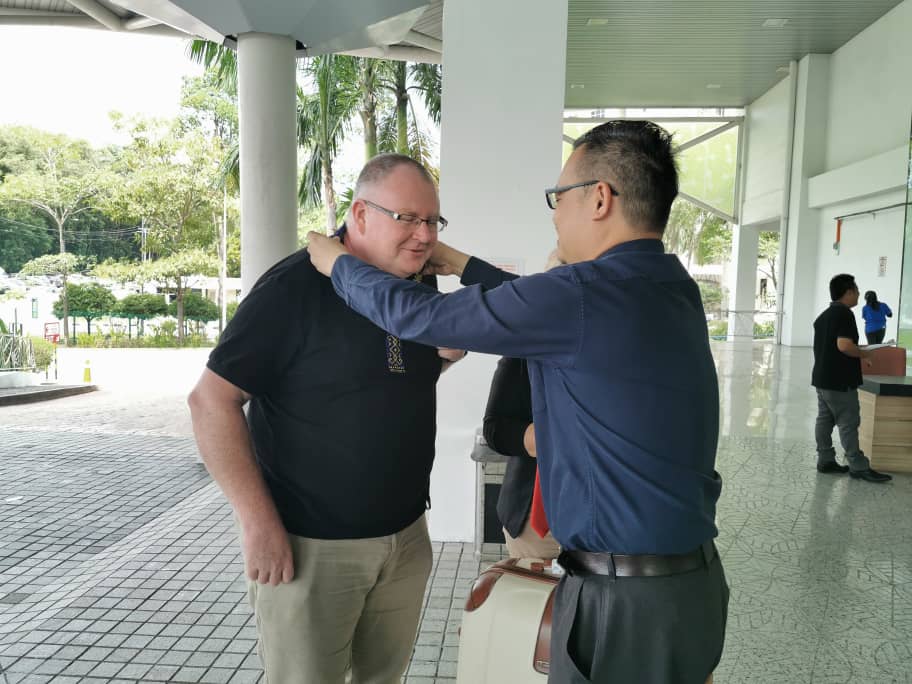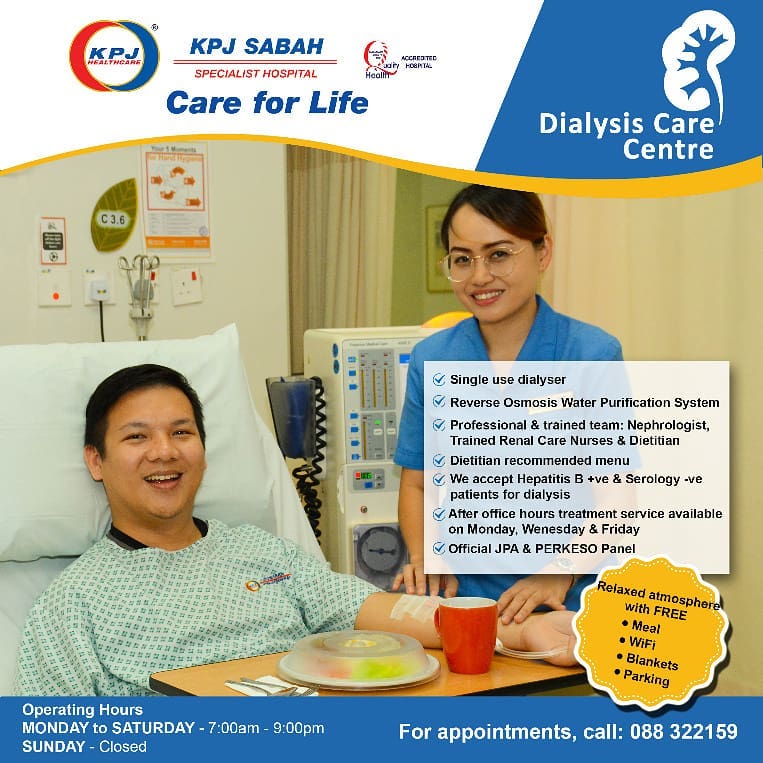November 22, 2019 - The medical tourism industry is expanding rapidly, with niche specialties emerging in certain destinations. Niches such as dialysis tourism in Sabah in Eastern Malaysia.
Life as a blogger turned journalist is never dull, and I have learned to expect the unexpected each day, but there are some things in life that you really don't expect.
If someone had told me, for example, that I would be on a plane to Malaysia this summer, I would have told them they were crazy. But there it was, an invitation from the Malaysia Healthcare Travel Council to attend the first-ever Medical Travel Media Awards in Kuala Lumpur. It was an invitation my wife and I were both surprised at and delighted to accept. I had been very curious about Malaysia and its health tourism since I first heard about it a year ago at the Crikvenica International Health Tourism conference after first listening to and then interviewing Malaysia Healthcare Travel Council CEO, Sherene Azli.

Sherene's fantastic presentation on how all the Malaysian stakeholders had come together in a public-private partnership to develop a national brand and deliver high-class product was beautifully delivered and left a lot of medical tourism stakeholders from Croatian looking on with envy. I was delighted to accept an offer of 5 days touring Malaysia and some of its medical facilities as part of my trip.
One of the things that impressed me about Sherene's presentation was the efforts Malaysia is putting into patient comfort and ease of travel. Apparently, they had a fast-track passport procedure for medical tourism guests, even a dedicated medical tourism arrivals hall, from where transfers, including wheelchair assistance, are there to facilitate immediate transfer to the clinic. Although my destination was the hotel and not a clinic, the smoothness of transfer and hospitable welcome was a great start after a long flight.

It was lovely to see Sherene again - she is a wonderful and very inspirational lady - and I certainly did not expect to in such circumstances. I certainly did not expect to win the award for Best International Online Feature, but I will take it - thank you!
And while it was obviously nice to win some journalistic recognition, I was actually more keen to see Malaysia itself and learn more about its medical tourism industry. Over the coming weeks, I will be publishing a few articles on some of the initiatives going on in Malaysia, from the fascinating work at the Malaysia National Heart Institute in Kuala Lumpur, to niche tourism concepts that I had never heard of before, such as dialysis tourism.

Yes, dialysis tourism. The first time I heard the term 'dialysis tourism' was shortly after arriving at KPJ Sabah in Kota Kinabalu, the first clinic to introduce it to Malaysia.
My association with medical tourism is now about two years old, and although I have learned a lot following the potential of the medical tourism industry, I have much more still to learn, and so trips like this are a real education. There is a lot of rubbish written about medical tourism, and a lot of generalities. It was when reading IMTJ editor Keith Pollard's blog about an article I had written about Zagreb's strategic plan which got me thinking about niche medical tourism a little more. In the article, he wrote:
The services to be promoted are listed as:
Dentistry, cosmetic surgery, cosmetic/aesthetic services, ophthalmology, internal medicine, orthopaedics and executive health checks. Well, that’s seven services embracing a plethora of healthcare activity. In which of these does Zagreb have real strengths?
49 market niches. Seven markets, seven very broad services. That’s 49 market niches. E.g. Let’s sell:
Executive health checks to the UAE. Ophthalmology to AustriaOrthopaedics to Russia…and 46 others. Of these 49, which should Zagreb pursue and which are the priorities?

Malaysia's health tourism industry is much more cohesive and developed than back home in Croatia, and there is plenty to learn and replicate, such as identifying and developing niches.
Why dialysis tourism, and why only in Sabah, on the island of Borneo? The very helpful team at KPJ explained that while Indonesia is the main market for medical tourists, they were also looking to attract the wealthy medical tourists from Brunei, which has sufficient dialysis needs to make it an interesting market. That, as well as the fact that the lack of reliable and available dialysis facilities for tourist use means that travel options for people needing dialysis treatment - and their families - is extremely restricted.
What if those high-quality facilities were made available in a top tourist resort such as Sabah, affording a new freedom of travel and tourism experience for those on dialysis, and their families? The concept made complete sense when it was presented, and a quick Google search afterwards showed that while dialysis tourism in Malaysia was not unique, there were actually relatively few places offering it. Indeed, looking at IMTJ listings for dialysis tourism yielded just one listing, in the UK.
But KPJ Sabah is not content with just offering basic dialysis tourism - there are also sessions of dialysis kinesiology, a concept which was also new to me. Rather than embarrass myself trying to explain, why not learn more from a professional - Dr Kenneth Wu with the video explanation above.

And KPJ Sabah is not alone in its dialysis tourism offer. Gleneagles opened recently in Kota Kinabalu and is also offering dialysis tourism - here is their dedicated room, above.
And there is certainly market potential. According to Kidney.org:
Over 2 million people worldwide currently receive treatment with dialysis or a kidney transplant to stay alive, yet this number may only represent 10% of people who actually need treatment to live.
Of the 2 million people who receive treatment for kidney failure, the majority are treated in only five countries – the United States, Japan, Germany, Brazil, and Italy. These five countries represent only 12% of the world population. Only 20% are treated in about 100 developing countries that make up over 50% of the world population.

The facilities in both centres were excellent, and the accommodation was extremely clean and comfortable, with lovely views - especially for golf lovers at Gleneagles - an 18-hole course awaited at the end of the garden.
It is certainly niche tourism, but an interesting concept to develop, and certainly one which could bring new freedom to those reliant on dialysis treatment.
And if you are looking for a spectacular destination to explore with the knowledge that your dialysis needs are covered to a very high and professional standard, Sabah is stunning. Check out the video below for a flora and fauna rain forest feast. Highly recommended.
To learn more about dialysis tourism and other medical tourism options in Malaysia, visit the Malaysia Healthcare Travel Council website.


